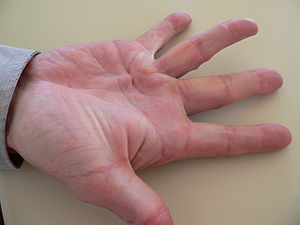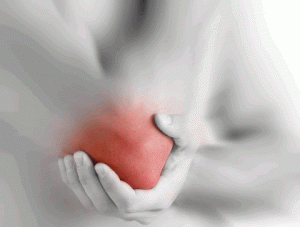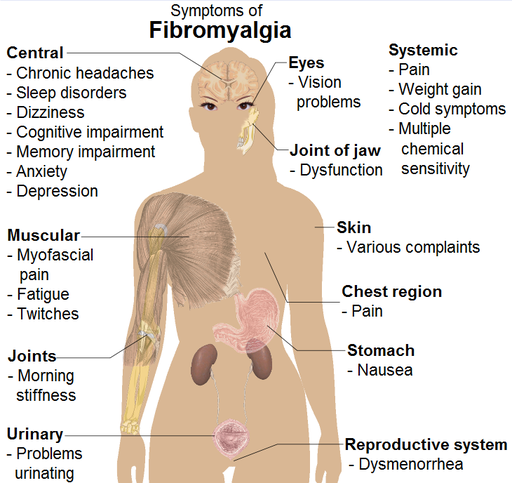Last blog we talked about trigger finger but sometimes trigger finger can be confused with Dupuytren’s contracture and vice versa.
Dupuytren’s (du-pwe-TRANZ) contracture (DC) is a condition that develops slowly affecting the connective tissue under the skin of the palm. Tissue knots form beneath the skin until, eventually a thick cord of tissue is formed pulling one or more fingers into a bent position. Once DC is in effect the finger(s) cannot be straightened completely, complicating everyday activities for those affected. It most commonly affects the ring finger and pinky of white males.
No one really knows what causes Dupuytren’s contracture, though some researchers suggest it may be an autoimmune response since DC is often present concurrently with other contractures in the body, such Ledderhose disease (feet.)
Treatment
Massage and exercise can be used in conjunction with other suggestions outlined on the Dupuytren’s Contracture website to increase the body’s ability to heal itself.
Massage increases the blood and lymphatic fluid circulation which in turn brings in greater oxygen to the area around the scar, which can help prevent or regress tissue fibrosis. In addition, acupressure points worked in massage increases energy movement (or Chi) in the arms and hands, again facilitating greater overall well-being and health, which affects the entire body, including the hands and most importantly, the immune system.
Exercise can also be helpful as it stretches the fascia and strengthens the extensors to aid in offsetting the contracture, providing relief.
Traditional western medical treatment involves removing or breaking apart the cord(s) that cause DC to pull your fingers toward your palm. These include:
- Needling: A needle, inserted into skin, to break-up the cord of tissue, these often recur but needling can be repeated.
- Enzyme Injections: Injections of an enzyme, called Xiaflex to soften and weaken the taut fibers in the palm. Twenty-four hours after the injection, the physician will manually break-up the softened fibers and straighten your fingers.
- Surgery: Surgically removing the corded tissue in your palm, though it can be difficult to identify tissue in the very early stages of the disease. Since diseased tissue can attach itself to the skin, it can be difficult to remove and increases the odds of recurrence. Surgery has the longest recovery time and is the most invasive option. Requiring months of intensive post-operative physical therapy.




